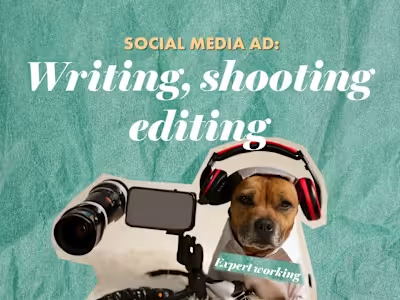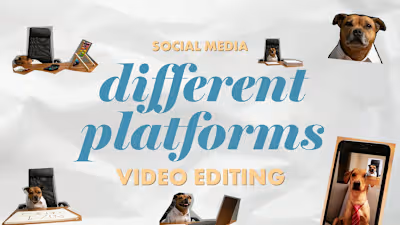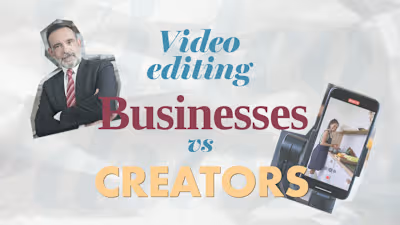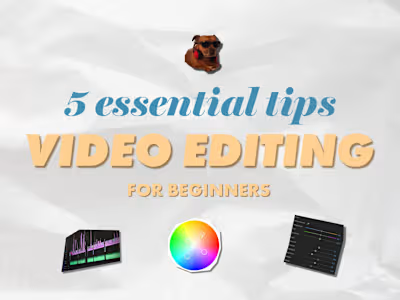What to Expect from a Video Editor
Like this project
Posted Jun 16, 2023
In this article, I’m gonna share my opening and what I consider to be realistic (and unrealistic) expectations when hiring a professional video editor.
Likes
0
Views
30
Clients

Contra
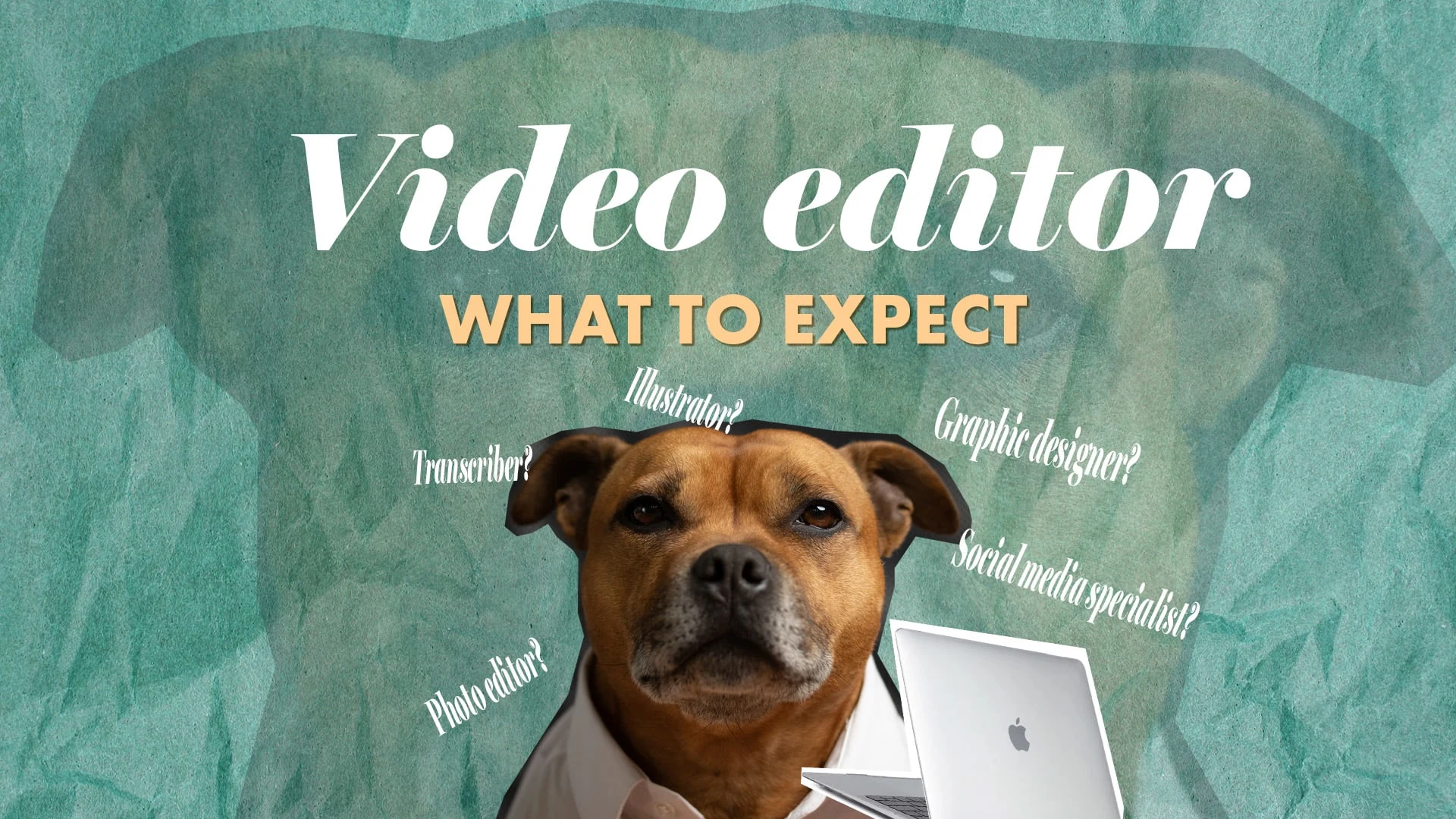
I. Introduction
In this article, I’m gonna share my opening and what I consider to be realistic (and unrealistic) expectations when hiring a professional video editor. There are lots of misconceptions in this process, and many will assume they also get one or more of the following:
Photo Editor
Thumbnail creator
Graphic designer
Logo designer
Motion designer
Illustrator
3D artist
Social media specialist
Scriptwriter
Transcriber
Subtitle editor
Viewer analytics research
In short, people over assume the editor's role, and sometimes they confuse the editor with a “creative assistant”.When that’s said, many video editors have experience in other fields as well and might be able to help you out with other needs. The important thing is that both parties communicate needs and expectations early on, for the entire project.
I also want to point out that parts of this article are inspired by “The Editing Podcast”, episode “The Misconceptions of Hiring an Editor”. Very insightful content that I highly recommend you check out.
II. Planning
The earlier you can include the video editor, the better. From the very beginning if possible. Reach out to them, explain the project you have in mind, and start the conversation there. The editor can be helpful by asking questions that can uncover technical needs that you might need a second freelancer to do. Maybe you have an explainer video in mind for your brand, but you don’t have any brand guide or design assets for your company. Or you’re planning a video campaign, but you haven't planned the marketing campaign yet. I’ve had people reach out to me several times about helping them edit a video for their crowdfunding campaign, but they were also expecting me (the video editor) to plan the campaign, write the script, provide the footage, and design all of the assets for the video.
Bigger marketing teams and agencies usually don´t over assume the editor's role when hiring someone for a project, but it still happens from time to time. So regardless if you’re part of a bigger machine or just a one-man band: Talk about what the editor can help out with, before starting anything.
III. Tasks
The basic skills any editor needs to know:
Storytelling
Splicing (joining two clips together)
Arranging footage
Implementing images
Adding B-roll
These parts of the editing process can be very time consuming and complex, something not every “none-editor” always understand. They will often focus on how many different skills the editor knows, like if they also do some motion design or any VFX. If you look at a bigger production, like a TV show, the video editor is not expected to wear many different hats. For his employer to assume (without agreeing ahead of time) that he will also do the music, sound design, VFX, motion graphics, color correction, and grading, that would quickly become a toxic work situation.
With that said a video editor that creates content for social platform and online ads often need to be a Swiss Army Knife and do a little bit of several things. This is not uncommon and completely understandable that the client would like, but expectations need to be set before starting a project. One editor might be an expert on sound design and music but needs to source out motion design and color grading. If this is the case maybe your editor can take care of hiring someone to do the graphics and colors, so you as the client only need to talk with one editor.
IV. Assets
For editing a video, we need something to edit. Typical assets used in a project are:
Video Footage
Stock video
Images
Graphic files
Recorded audio
Music tracks
All of the above come in a number of different file types as well (to complicate things even further). Address this early on in the process. Ask the editor if the assets you’re planning to provide are something he can use. If not, work together to find a solution. Most editors are tech-savvy and have workflows for converting different formats and filetypes. But this also adds more work (and more billable hours) to the project. So address it early, and things will move a bit smoother.
One typical assumption I run into often is that the client expects me to plan, search for, provide, and pay for stock footage, all without talking about it ahead of time. This is a thing I try to mention early in the process, for an additional fee I can help out with finding and collecting suitable stock footage for their project. But sometimes they forget, and we need to have the conversation again during revisions.
V. Revisions
This is a big one. This one goes out to all editors and clients:
Always state how many revisions are included in the project's initial price. Always.
Depending on the complexity of the project, I might try to aim to have the video 60% done for the first draft (as a rough cut) to get some client feedback, then aim to have the rest done by the second draft.
I typically include 1-2 revisions in the initial price, and have a set price for more revisions. Sometimes clients will push their luck by asking for small adjustments and changes, assuming it doesn’t count as a revision.
I do understand this way of thinking, but I as a professional editor need to set boundaries for the working relationship. When the client asks for more changes than what was initially included in the order, I inform them that I’m happy to add another revision for an additional fee.
VI. Creative Visions
When I start working with a new client I always ask them to provide examples of the look and style that they have in mind for their unedited video. This can be their own previous work or examples from other creators and businesses. Rarely the client will expect an exact copy of the examples they’re providing, but it’s still important that the editor is clear about what he can and can not do.
Another thing to take into consideration is the editor’s artistic expertise and how he can uniquely contribute to your project. Video editors often steal like artists, meaning they will follow examples and use visuals styles and techniques that fit the project, and end up creating something new and unique. This will heavily depend on the type of video you’re creating, but taking into consideration the editor’s input and suggestions for enhancing the video os both a practical and creative process. It’s his job to bring your creative vision to life, but ultimately it will be both the clients and the editors creative vision in the final product.
VII. Instructions
It might feel a bit overwhelming with all of the things mentioned above, so here is a short list of things to keep in mind when hiring an editor:
Provide clear and concise instructions to the video editor.
Communicate the desired tone, mood, and style you have in mind.
Address any specific technical requirements or preferences that you may have.
VIII. Conclusion
In this video, we talked about the expectations when working with a video editor, in regard to planning, tasks, assets, revisions, creative visions, and instructions.
The importance of an effective collaboration will dictate the final outcome of the project and your video. I encourage you to value the editor’s skills, expertise, and creative input.
I also wanna encourage all video editors out there to take a big interest in the client's needs, try to uncover how much they know about the process of working on a video project, and be sure to communicate Cleary what you can and can not do for them.




